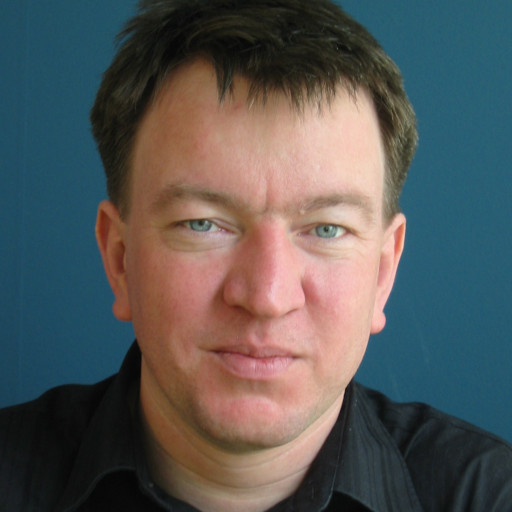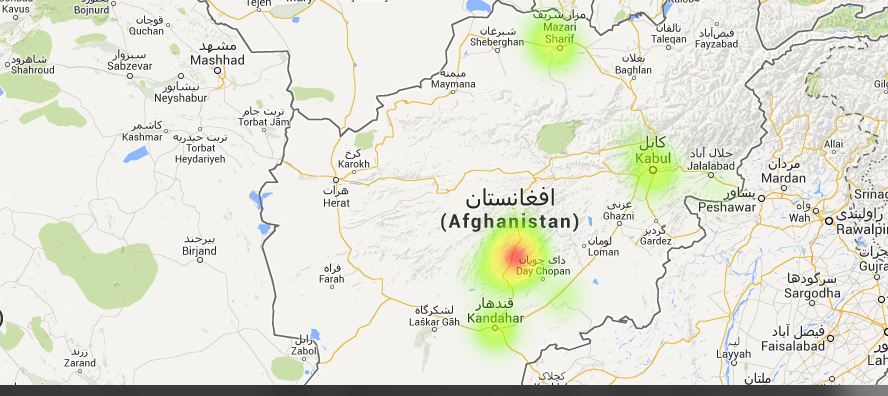The International Aid Transparency Initiative (IATI) provides a standard for the exchange of information on activities, budgets and results. More and more NGOs are embracing the standard as well, and in The Netherlands, civil society is actively working with IATI:
- Cordaid just released their data, and organised a public “Data Journey” event to show what you can do with the data.
- Partos, the network of Dutch NGOs in development cooperation, is running a programme to help 80 organisations embrace the potential of IATI, with around 25 NGOs involved in the first track towards implementation.
- Cordaid and Partos, together with the Ministry of Foreign Affairs in The Netherlands and a handful of experts, are starting to research and pilot further use of IATI in the exchange of data.
Being involved in all these activities, and on my way to the Technical Advisory Group meeting of the IATI standard body, time to reflect on how IATI can be (or should be made) useful for civil society actors.
Cordaid’s case
Cordaid wanted to increase their transparency to the general public, and publish a lot more information about their work on their website.
They embraced IATI as a standard to connect their back-end management information systems to front-end project progress monitoring tools and to their public-facing website.
The technical infrastructure basically was ready at the beginning of 2013, and powering the web portfolio since. It took almost another year to embed “open” in the whole workflow of the organisation, and to go over a quality check (and improvement), before they felt ready to publish “raw data”.
Getting ready to publish your activities as open data gives a boost to your internal quality management.
It now is one of the richest and most detailed sets available. But what can others do with it? Cordaid set out on three Data Journeys to explore.
The untold story of Afghanistan
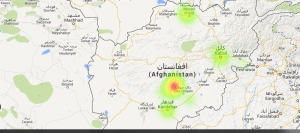 According to the public image in the media, The Netherlands is retreating from Afghanistan. And we did military and police work mostly. Heinze Havinga looked at what the data tells, to show what Cordaid is doing there: the sectors and locations they’re active in, and how much is spent. The rich descriptions allow a journalist to explore untold stories, and also immediately find the right contact details for further information.
According to the public image in the media, The Netherlands is retreating from Afghanistan. And we did military and police work mostly. Heinze Havinga looked at what the data tells, to show what Cordaid is doing there: the sectors and locations they’re active in, and how much is spent. The rich descriptions allow a journalist to explore untold stories, and also immediately find the right contact details for further information.
Rich data lets a journalist find out more about what you’re doing where, and how to get more information.
Insight in the Democratic Republic of Congo
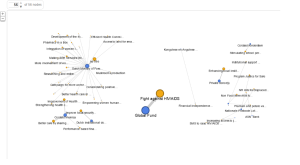 Cordaid’s business units are active throughout Congo. But who is working where? And who are the donors? Pelle Aardema looked at the details of locations and funding relations, to show a map and a network graph. For instance: The Global Fund is a big donor funding one big project, whereas the Ministry is another big donor funding a multitude of smaller projects.
Cordaid’s business units are active throughout Congo. But who is working where? And who are the donors? Pelle Aardema looked at the details of locations and funding relations, to show a map and a network graph. For instance: The Global Fund is a big donor funding one big project, whereas the Ministry is another big donor funding a multitude of smaller projects.
Information about locations and your organisational structure paves the road to management information and insights.
The bigger picture in the sector
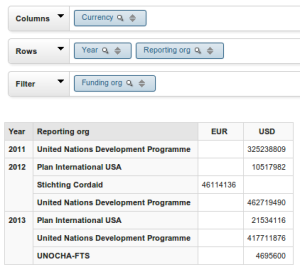 By now, over 200 organisations publish data, so can we see the bigger picture of what is going on? My colleague Jaap-Andre and I used data profiling and data integration tools to see what we can find out. For instance: which organisations say they receive funding from the Global Fund and how much do they receive? This turned out to be hard: accurately linking across data sets and preventing double counting is hardly feasible now.
By now, over 200 organisations publish data, so can we see the bigger picture of what is going on? My colleague Jaap-Andre and I used data profiling and data integration tools to see what we can find out. For instance: which organisations say they receive funding from the Global Fund and how much do they receive? This turned out to be hard: accurately linking across data sets and preventing double counting is hardly feasible now.
Combining data sets offers some information, but the quality and completeness should improve to make it easier and more useful.
Making IATI work better for NGOs
The IATI Standard is not set in stone: we can bring forward use cases of NGOs, and thereby help inform further development of the standard.
How can IATI be useful for:
- internal monitoring and steering
- exchanging information within networks and partnerships
- communication towards the general public
- as a basis for, or replacement of reporting to donors
A few simple steps would help a lot:
- Providing better guidance and feedback on the use of organisation identifiers and activity identifiers will help reduce the effort to prevent double counting, and more easily let you find out (competitive) information about your donors or implementation partners.
- Expanding the capability of the IATI standard to represent results will make it a lot easier to monitor progress of the work of your NGO or partnership, and also to show to donors and the general public what your targets and achievements are.
In The Netherlands, we are starting to research and develop these aspects in pilots, working with civil society, donors and technology providers, to propose concrete improvements based on real-world experiences in using IATI data.
